#Ratonneau
Photo

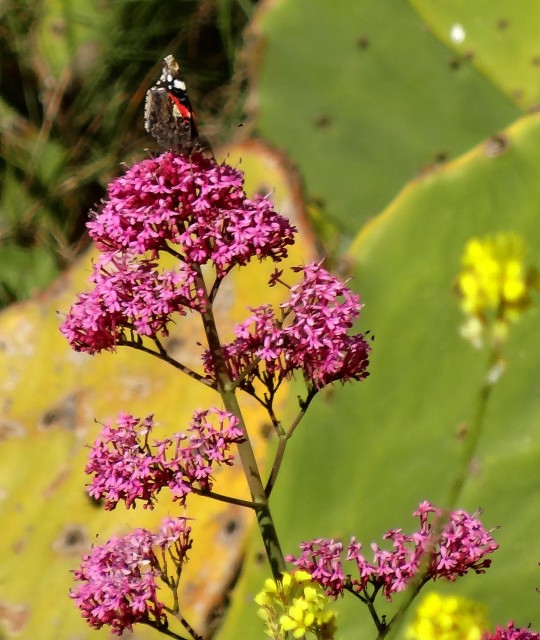


Je reviens ENCORE une fois à mon projet de présenter la plupart de mes 55800 photos (environ). On est en 2017 et comme ce blog est né en 2017, j’arriverai donc au bout de cette présentation.
Marseille, au printemps. Avec Christian, on part sur les îles du Frioul, dans le Parc National des Calanques.
Ici, des fleurs sur l’île de Ratonneau : Ornithogale d’Arabie, Centranthe rouge (ou Lilas d’Espagne) et Astérolides maritimes.
Ensuite la Calanque du Berger.
#souvenirs#marseille#frioul#îles du frioul#archipel du frioul#parc national des calanques#île#île de ratonneau#ratonneau#botanique#calanque#calanque du berger#astérolide#ornithogale#centranthe rouge#centranthe#lilas d'espagne#ornithogale d'arabie
6 notes
·
View notes
Photo
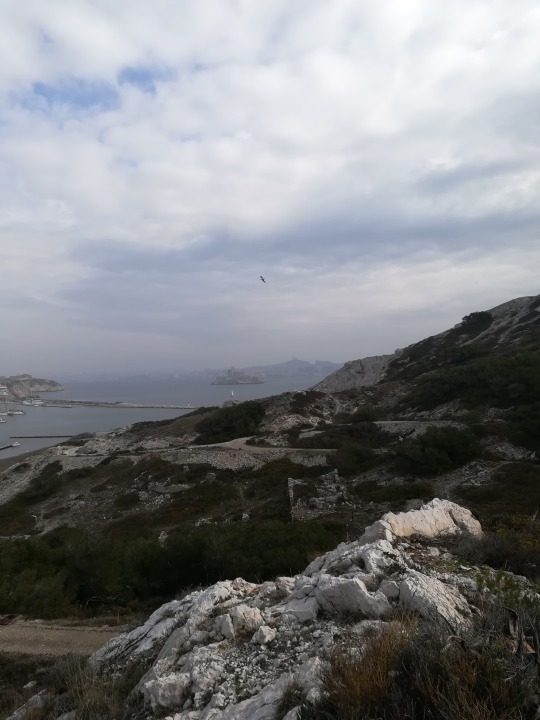



i wish i had spent days, not hours, on les îles du frioul. in february the wharves, shops and cottages were eerily deserted, and the abandoned military buildings compounded the post-apocalyptic-open-world-video-game feeling. we saw less than a fifth of the 500 acres before our boat back to marseille left.
#mine#marseille#frioul#ratonneau#pomègues#france#it was 3 years ago but i still daydream about it all the time
3 notes
·
View notes
Text
The Boat-Eating Sea Dog
The Boat-Eating Sea Dog

There are many stories about the Loch Ness Monster, the Jeti, Bigfoot, Yeran, and many other large mysterious creatures that inhabit our Planet. They are rarely (or never) seen. But on our recent trip to the island of Ratonneau, off the coast of Marseille, we spotted the Boat-Eating Sea Dog. To our surprise no one else saw it. However, I was lucky enough to have a camera, and snatched a picture…
View On WordPress
0 notes
Photo

#Marseille #fortderatonneau #iledufrioul #calanques #holidays #vieuxport #sun #sea #beach #2021 #picoftheday (à Île de Ratonneau) https://www.instagram.com/p/CV8-IpKICka/?utm_medium=tumblr
2 notes
·
View notes
Photo

Ratonneau Island
Limestone juts out of the sea in the Frioul archipelago, Marseilles, CAz.
2 notes
·
View notes
Text

word prompt compilations » accepting.
@nileguard » ++ (reverse) [ flower ] for your muse to offer my muse their favourite flower
THE AIR STINGS WITH THE HEAVY SCENT OF SALT AND FRESH FISH DRIFTING ACROSS THE VIEUX PORT OF MARSEILLES. an indigo sea spreading before them, with the market located at the Quai de Belges, and the ancient, ever gorgeous Notre-Dame de la Garde rising behind them like a sentinel towering over the city. Booker would lie if he claimed that this still is the city of his youth, but no matter how much the cityscape may change, it forever feels like home. through unrests and riots, through gentrification and uprisings, however ugly the city may have turned in those past two hundred years, la Cité Phocéenee is past, present, and future combined into one for him. something about him thus feels different. burdens and tiredness dropped off his shoulders for a while, his mind seems happy to bask in old memories and eagerly soak up new ones, and the smiles come a little easier.
he may, ever so often, look down his nose at that sickening form of American patriotism that seems to survive no matter how far the country flushes itself down the goddamn gutter, but there is no denying that the Frenchman has some form of national pride deeply ingrained into his head as well. granted, all Europeans do except for the Germans, but they know why.

he’s left Nile watching the boats heading to Ratonneau, Pomègues, and Cassis to conduct some business further down the quay and when he returns, seemingly content, he props his elbows on the railing next to her and holds a single, purple flower nonchalantly in front of her nose. “lavande de mer. sea lavender. not quite the same smell, but unique to this area. as a child I used to pick entire bouquets of it down by the cliff and bring it back home.” a dot of colour in a simple home. “Andy called. we’re meeting up in Nice the day after tomorrow.”
#nileguard#[ ANSWERED ] » and god knows i'm not dying but i bleed now. and god knows it's the only way to heal now.#[ POST TOG ] » if you were ever in doubt don't sell yourself short. you might be bulletproof.#(have a happy booker for a change).#(he got those days too).
1 note
·
View note
Photo

🇺🇸 A few kilometers from the coast of Marseille is the small archipelago of the Frioul Islands, a natural paradise characterized by turquoise waters, rocky coasts, and whipping wind. During a stay of several days in the French city, the one to the islands is one of the excursions not to be missed. Frioul archipelago is a protected natural area located about 4 km away from the port of Marseille and which is part of the Calanques National Park. The islands that compose it are four: Pomègue, the largest, Ratonneau, If and Tiboulen du Frioul. The toponym Frioul derives from the Provençal term “frieu” which indicates a maritime passage. This obviously refers to that stretch of sea that separates Pomègues from Ratonneau. Today the two islands are connected to each other by a dam erected during the reign of Louis XVIII. 🇮🇹 A pochi chilometri dalla costa di Marsiglia, si trova il piccolo arcipelago delle isole Frioul, un paradiso naturale caratterizzato da acque turchesi, coste rocciose e vento sferzante. Durante un soggiorno di più giorni nella città francese, quella alle isole è una delle escursioni da non perdere assolutamente. arcipelago delle Frioul è un’area naturale protetta che si trova a circa 4 km di distanza dal porto di Marsiglia e che fa parte del Parco Nazionale delle Calanques. Le isole che lo compongono sono quattro: Pomègue, la più grande, Ratonneau, If e Tiboulen du Frioul. Il toponimo Frioul deriva dal termine provenzale “frieu” che indica un passaggio marittimo. Questo, evidentemente, si riferisce a quel tratto di mare che separa Pomègues da Ratonneau. Oggi le due isole sono collegate tra loro da una diga eretta durante il regno di Luigi XVIII. (presso Marseille) https://www.instagram.com/p/CO1_otcBSaR/?igshid=1mfhr6fbu8eir
0 notes
Text
Lavender Fields, Bouillabaisse, and Calanques: The 4-Day Weekend in Marseille

You already have some understanding of Provence; it’s a fancy region in France, oui?
Oui, that’s right. Provence is chic, since it includes the glitzy Riviera (think Nice, Cannes, Saint-Tropez). It’s not as wine-drenched as Bordeaux, Burgundy, or the Loire Valley, but in place of those vineyards are purple lavender fields that roll into oblivion. They also happen to be just a short drive from Marseille, Provence’s capital and largest city (and France’s second-largest after Paris).
A vacation anchored in Marseille offers all sorts of sensory rewards: There’s the smell of lavender, outdone only by the savonneries—the famed soap makers. There’s the taste of tomato-fish bouillabaisse stew, swapped for ratatouille if you’re seafood-averse (or especially hungry), chased by French wines that may or may not be Provençal. There’s the blue Mediterranean expanse to savor as the sun warms your skin, though it’s best earned by hiking through the forested Calanques National Park. After your trek, you’ll settle into a walled-in calanque cove to soak up the natural beauty and isolation.
]]
Inn-to-Inn by Bike in Southern France
The city itself is restless, in a good way. It has the reputation of being grittier and more grounded than Paris—which is a compliment, really. There’s rarely a quiet moment in the Vieux Port, between the ferries to Count of Monte Cristo-inspired Chateau d’If, the aperitif crowd, and the late-night local revelers. It’s teeming with top-tier restaurants that don’t know how top-tier they are.
The city is grounded and world-class, without the urge to show it off. Four days is not enough, in my opinion, given how much time you could spend exploring the region. But if that’s all the time you’ve got, here are the places to spend it.
Where to Stay in Marseille
]]
Hotel Dieu—InterContinental Marseille: You really can’t miss seeing Hotel Dieu, just off the Vieux Port, acting like a palatial gateway to the old town. You might even mistake it for a royal palace, though it’s actually an 18th-century hospital that was operable until the early aughts. In 2013, it reopened as the InterContinental—Hotel Dieu, and is now one of the most luxurious homestays in Marseille. There’s the Michelin-starred Alcyone onsite, serving inventive Mediterranean fare, as well as the terraced cocktail bar Capian offering aerial views of Vieux Port and Notre-Dame de la Garde. As for the rooms, well, it’s an InterContinental after all; you get stately accommodations designed in mineral tones to match the city’s rocky coast. The icing on the cake is the onsite Clarins spa, fit with a warm indoor pool, experience showers, hammams, massage and spa treatments, and an adjacent fitness studio.
Le Petit Nice Passedat: The 16-room Le Petit Nice Passedat offers 5-star luxury with views of the sea—and private terraces from which to take it all in. It’s connected to the 3-Michelin-star restaurant by the same name, serving eclectic regional seafood (get the Marseille favorite bouillabaisse fish stew multiple times in town, but order the deconstructed, reimagined version of it from the fixe prix menu). Both hotel and restaurant are passionate undertakings of noted chef Gérald Passédat. While you’re a couple miles from the city center, it’s no inconvenience given the day or two you’ll spend near the coast or daytripping from the city altogether.
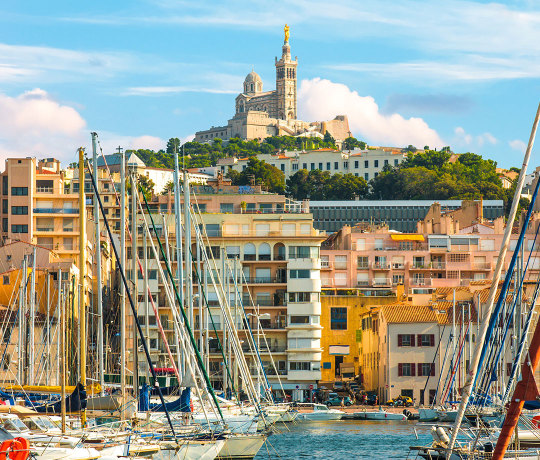
]]
What to Do in Marseille
If you plan to hit the city’s key tourist attractions and want unlimited public transit access (in particular its bold-and-bright orange metro), then consider purchasing a Marseille Tourism Pass for intervals of 24, 48, or 72 hours (for 27, 37, or 43 euros, respectively). You can purchase it at various spots in Marseille: the Tourist Office and Convention Centre, La Capitainerie des Docks, Vieux-Port and Saint Charles metro stations, or Airport Information Office.
Hike the Calanques: See “Day Trips” below.
Vieux Port (Old Port): Marseille’s central bustle seems to swirl around the Vieux Port, a hotel- and restaurant-lined marina that stays boisterous at all hours of the day and night. You can nestle in for aperitif or a late-night bar crawl, stock up on soaps and market souvenirs, catch the boat to Chateau D’If, or marvel at religious relics like Saint Victor’s Abbey (5th century), or Saint-Ferréol les Augustins (15th century).
]]
Going on an Outback Helicopter Pub Crawl Outside Darwin
Buy soap: Since the 17th century, Marseille has been known for soap-making, and the city is still famous for its 72-percent-oil recipe. And because it’s more of a tradition than a reliable global export these days, Marseille soap makes for a terrific gift or souvenir from your travels. Save some room in your suitcase, and never mind if you have yet to appreciate this craft: You’ll have a hard time narrowing down which scents and shapes to bring home—and for next to nothing. (At the very least, you’ve got to get some lavender soap, since it’s Provence.)
Stock up at these stores and makers: La Savonnerie Marseille, La Maison du Savon, Soap Factory — Le Serail, or The Marseille Soap Museum.
Unité d’Habitation/Corbusier’s Radiant City: Le Corbusier’s architecture is characterized by the marriage of colorful expressionism with functional spaces, and this “Radiant City” apartment complex is one of the most famous structures. (It’s now a UNESCO World Heritage Site and French National Monument.) This residential complex largely influenced the brutalist movement and redefined urban living for its residents, thanks to symmetrically designed apartments and thoughtfully executed public spaces. Most notable is Le Corbusier’s use of color, which you’ll see from inside and out. Book an English tour while in town for an eye-opening tour at the complex, including a preserved apartment room. (The others are now inhabited by some of Marseille’s upper class. A pre-booked Saturday 10 a.m. tour is requisite for viewing, unless you otherwise visit the onsite cafe or stay in the onsite hotel.
]]
Coastal R&R: Head to the coast for aperitifs, sunbathing, long walks on the cliff, romantic dinner views, and more. Just note that sandy beaches are few and far between and rather small, hence why most residents are totally fine lying out on the rocks. If you crave sand, point yourself to Plages du Prado, Plage du Prophete, Plage Borely, Plage de L’Estaque.
If you want to relax under the sun on a reserved beach lounger, drink in hand, with a ladder into the big drink, then call one or two days ahead to Le Bistrot Plage, a restaurant and public beach club that will have you feeling like you’re at the Riviera, minus any absurd prices.
15 Beaches That Are Better in the Fall
Chateau d’If and Frioul Archipelago: You might know this 16th-century army fortress as a key setting in The Count of Monte Cristo. Chateau d’If on the smallest island of the Frioul Archipelago, just two miles west of the city. Book a roundtrip ferry to and from the Old Port to the Chateau for a 45-minute tour (plus ferry travel time), and you can even hop off at Ratonneau, one of the larger of the Frioul Islands, for lunch or leisure, before returning to Marseille’s port. (Walk to the cozy but sandy Plage de Saint Estève from the Frioul Port if you want some snacks and beach time away from the city.)
MuCEM and Villa Méditerranée: If you fancy some art, history, or both, then check out MuCEM, or the Museum of European and Mediterranean Civilizations, as well as the neighboring exhibition hall Villa Méditerranée. At the very least, take a walk to the end of the harbor where they reside, to gawk at their marvelous facades.
]]
Cathédrale La Major: In stark contrast to the neighboring and aforementioned art museums, this massive 19th-century Byzantine-Roman-Revival–style cathedral is all-imposing.
Off the Beaten Path: 27 Epic Views Every Hiker Should See
Basilique Notre-Dame de la Garde: Marseille’s compass rose, if you will, this hilltop Catholic basilica can be seen from nearly everywhere in the city, and offers stunning panoramas for that same fact.
Parc Borély: In a city not known for its parks, the 17-hectare Borély stands out as one of Marseille’s prettiest features. Catch some fresh air in its formal gardens, mosey across the promenade to the coast, or visit the neighboring botanic gardens.
La Vieille Charité Cultural Center: History, culture, art, and performance come together at the 17th-century grounds of La Vieille, in the heart of Marseille’s old quarter, Panier.
Orange Vélodrome: Be it rugby, soccer, or stadium concerts, the Orange Vélodrome is probably playing host to some event while you’re in town. You can also tour the century-old, ever modernized stadium, in case you can’t catch a game.
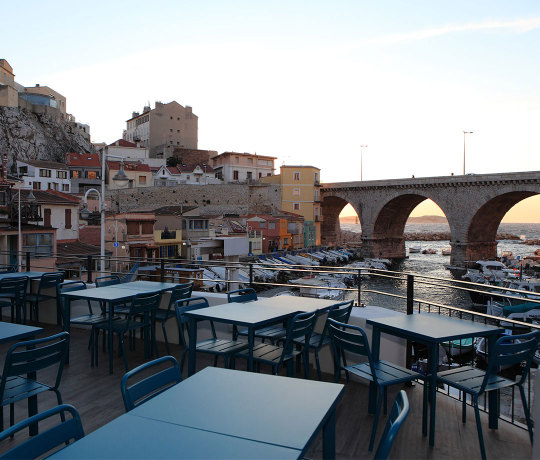
]]
Where to Eat and Drink in Marseille
Pizzeria Chez Jeannot: It’s not just a pizzeria—really, get the steak or the catch of the day—but it’s very much a staple tucked inside the cozy port de Vallon des Auffes. It makes for a romantic date night, or a great group dinner. Book ahead.
Chez Fonfon: A perfect place to slurp bouillabaisse and savor a bottle of wine. The fancy Fonfon resides next to the aforementioned Chez Jeannot inside port de Vallon des Auffes. Yes, it’s worth coming to this nook twice in one weekend.
Carlotta With: Seasonal dishes, local ingredients, all done real nice and French-like. Come for any meal, or a respite between.
How to Order a Pint of Beer in Some of Europe’s Biggest Beer Hotspots
Le Café De L’Aabbaye: Plan at least one hours-long aperitif here, alongside Marseille’s hip and scene-y crowd. You might even see a few French A-listers enjoying the same vices. (We did, apparently, according to our sharp-eyed and starstruck hosts.)
Le Four des Navettes: Marseille’s oldest bakery (dating back to 1781), and perhaps still its most notable. Get their famed orange blossom biscuits.
]]
Le Carrousel: Come here for craft beer, with a dozen on tap and two dozen by the bottle.
La Côte de Boeuf: This Vieux Port staple has every cut of meat you might want—not just beef—and 400 kinds of wine with which to chase it all.
18 of the Best Modern Cocktail Bars in Europe
Le Miramar: Have your pick between the bouillabaisse or bourride stews, the fixed menu (with the likes of scorpion fish and truffle bass), or the shellfish platter for two.
Le Café des Épices: A deep-dive into colorful Mediterranean flavors, with dishes like octopus-pan-fried chard and confit lemon boneless rabbit.
Madame Jeanne: Natural wines paired with fresh, small-menu dinners—like confit rabbit-shizo squash. Where else can you get that?

]]
Day Trips From Marseille
Calanques Hiking: The rocky coastline of Marseille leads to the Calanques National Park, a 200-sq. mile grade-changing wonder with an equally rugged shore. It’s most spectacular from its various inlets, the actual calanques, which are walled in by dolomite or limestone and collect the crystal-blue waters in their public basin. You’ve got to earn this reward though, by parking your car and hiking through the national park itself—some of them are reachable under half an hour, others twice or triple the distance. It can be unpredictable, but think of this as a beautiful hike with a relaxing reward at the end (on rough, rock-covered beaches), rather than framing it as a beach day preceded by a hike. I think that mentality will better suit the experience—and will inform the necessary footwear you must wear for the walk.
Rent a car; pack water, sunscreen, lunch, and a backup phone charger; and head to the Calanques for at least one full day of your visit—and budget the day, starting early to maximize water time. And yes, you can also boat into some calanques from nearby Cassis or other small towns. But that’s kind of cheating. Oh, and during the hottest months of the year, namely July and August, the park is susceptible to fires, and oftentimes closes for entire days. So check the park calendar the day before you go, to see the forecast and clearance for the following day.
The Best Budget-friendly European Cities For Travelers
]]
Avignon or Aix-en-Provence: Provence provides plenty in lieu of humbler urban day trips. The medieval, walled-in historic center of Avignon makes for a charming and humbling day trip, just one hour by car and half that by train. Or opt for Cézanne’s birthplace, Aix-en-Provence, which is buzzing with academic energy. It’s a half-hour from Marseille by train or car.
Lavender fields near Luberon and Verdon: Want to see Provence’s trippy purple lavender fields? Rent a car and point it to the various farmlands between Luberon and Verdon. Do this in late spring through mid-July, and you’ll feel like you’re on another planet, with sprawling rows of purple—not to mention the soothing scent lingering in the winds. As a landmark, you can route yourself to the picturesque town of Valensole for dinner or lunch—you won’t miss the lavender fields on this drive, so long as you’re in season.
The post Lavender Fields, Bouillabaisse, and Calanques: The 4-Day Weekend in Marseille appeared first on Men's Journal.
Read the full article
#aweekinmarseille#ismarseilleexpensive#marseilletravelblog#marseilleweather#thingstodoinmarseille#thingstoknowaboutmarseille#timeoutmarseille#weekendinmarseillewax
0 notes
Link
Marseille is a bustling port city in southern France, best known for having the nation’s largest North African population.
Here in the center of the Provence region, sailors, wanderers, entrepreneurs and immigrants rub elbows and add to the colorful backdrop of this magnificent city, whose core values are reflected in stunning tourist attractions and a culture of international commerce and exchange. Keep reading to discover some of the best things to do in Marseille, France.
1. Visit Vieux Port
There’s no better place to get an introductory feel for the city than from the Old Port harbor. Right on the eastern end of Marseille’s busiest street, this picturesque location is very typical of the region and is the place where fishermen, pedestrians, travelers, street performers, and artists converge. The port is also teeming with local fish markets, all boasting the freshest, finest catch of the day. Many opt for an easy-going tour of the area for better insight into Vieux Port’s historical and present-day significance, including its connection to ancient Greece.
2. Tour major religious sites
Shrouded in local legend, Notre-Dame de la Garde is by far the most venerated of all the churches in Marseille. Appearing at the summit of the city’s highest hill, its gilded statue of the Virgin Mary can be seen and felt from all over town. Locals take a pilgrimage there every year to pay homage to the cherished emblem, which is said to keep a steady, watchful eye over Marseille’s fishermen and sailors as they set out to face the dangers of the sea.
Next up is the Abbaye Saint Victor. One of the oldest in the country, this early Christian church serves as an important burial site for saints, whose remains are now housed on display in the museum. Finally, well-known for its elaborate mosaics, the Cathédrale de la Major is a stunning Roman Catholic edifice built under the reign of Napoléon III, who laid the very first stone in 1852.
3. Check out Château d’If
Located just off the coast of Marseille, the Château d’If is an incredible structure originally sanctioned by King Francis I as a military fortress to shelter the city’s coastline and naval fleet from attack. The imposing stone structure would later serve as the site of a local jailhouse, imprisoning political enemies and religious asylum seekers for nearly 300 years. In the present day, the Château has been made famous by French author Alexandre Dumas’ novel, The Count of Monte Cristo, and can now be accessed by Vieux Port ferries.
4. Continue exploring off-shore destinations
Chateau d’If isn’t the only island you can reach by ferry. In just 20 minutes time you can also explore the islands of Pomegues, Ratonneau, and Tiboulen known collectively with If as Frioul. With access via the If-Frioul Express, the archipelago boasts a small, local community of its own, plus bars and restaurants set up for tourists. The 19th-century Caroline Hospital is also a historic spot along this island visit. Formerly operating as a primitive public health department and border protection agency, it regularly quarantined patients carrying yellow fever and other communicable diseases before allowing them entry onto the mainland.
5. See the Vieille Charité Center
The historic Centre de la Vieille Charité has certainly seen its fair share of functions over the years: as a place of worship and almshouse for the city’s poor, to an elderly home and orphanage for children. The baroque chapel is enclosed within the center of a large outdoor courtyard, where it’s surrounded on all sides by the archways and columns that have become typical of Italian architectural excellence. Also housed within the Vieille Charité is the Museum of Mediterranean Archeology and the Museum of African, Oceanic, and Native American Art, which offer unique means of interacting with both ancient external histories as well as exploring some of the cultures that contribute to Marseille’s own contemporary landscape.
6. Experience the great outdoors
Although there are many museums to see, Marseille is best known for its sunny disposition, which means that at some point it might be a good idea to trade in your reading glasses for a pair of hiking boots and hit the open trail. The Parc National des Calanques showcases natural cliffside inlets that can be found sprinkled throughout the neighboring Mediterranean. While dreamy and idyllic, some calanques are too remote to be accessed by tourists. For best results, head over to the Tourism Office for a detailed guide on the safest and most scenic routes. Plus, if adventure is what you crave, then experiencing the calanques by boat or kayak could mean even more breathtaking wonders to behold.
7. Head to the beach
Okay, so you’re not exactly stoked to be physically exerting yourself on vacay. We get it, but there’s no use wasting perfectly good scenery. Luckily, you can still enjoy the breathtaking beauty of the Marseillaise landscape while lazing about on the beach. Though the beach has become a somewhat symbolic reminder of the relaxed, harmonious way of life in the French Riviera, few people realize just how recent the phenomenon is in Marseille. Prior to the 1975 inauguration of Prado Park, it was virtually impossible for local swimmers to gain access to the sea. Presently the park occupies a space of nearly 89 acres (36 hectares) of lush green spaces, playgrounds, skate parks, and beaches of pebble and sand.
8. Shop local delicacies
Sampling local goods is an absolute must for anyone planning a trip to Marseille. From the Old Port a multitude of small shops and markets can be found, including master chocolatiers specializing in regional, artisan flavors, and beauty shops selling handmade soaps made from jasmine, almond, lavender, and other Provencal extracts typical of the region. Aptly referred to as the savon de Marseille, these nourishing, all-natural products are beloved throughout France and make excellent souvenirs for friends and family.
Marseille’s largest avenue, La Canebière is comparable to Paris’ Champs-Elyséès in that is a major beacon of wealth and prestige within the city, featuring luxury hotels, Haussmannian architecture, and high-end merchants. Just south of there the Capucin district runs a North African-inspired bazaar where teas, spices, and other Maghrebine goods can be found for cheap.
9. Peruse the Parc Longchamp
Comprising 20 acres (8 hectares) of land, Longchamp Park is a celebrated public space commemorating the flow of water to the city via the Marseille canal. Not only do spectacular fountains, statues, and natural greenery make it a local favorite, but the site is also home to the city’s oldest museum, the Musée des Beaux Arts, where an impressive collection of provencal paintings and artwork can be found.
10. Even more maritime wonders
Marseille’s Palais de la Bourse is the one place in town where the economically inclined go to monitor the state of the city’s stock exchange. Bearing the name of the mythological god of trade, it echoes of Marseille’s history as a prime port city in the Mediterranean region. It also includes an extensive maritime museum–a sea wanderer’s paradise, complete with detailed nautical maps and unforgettable displays of critical sea vessels throughout history.
Read also: Top 10 things to do in Lyon
From : https://wikitopx.com/travel/top-10-things-to-do-in-marseille-france-706076.html
0 notes
Photo

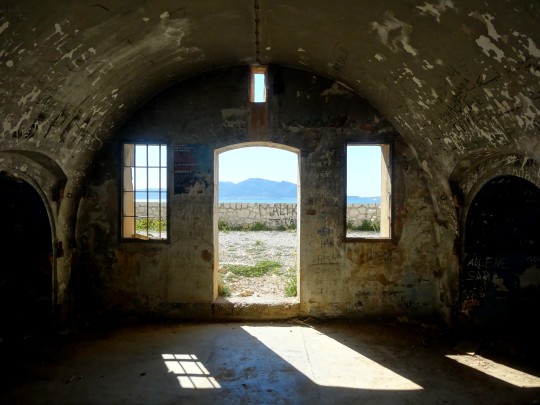

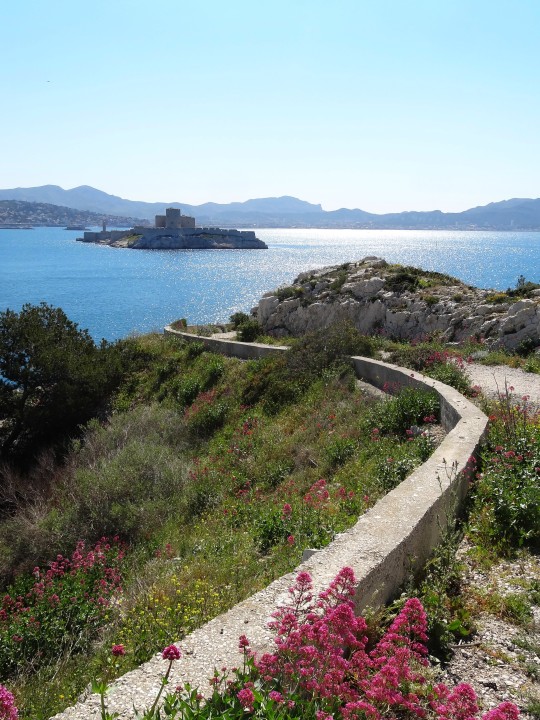




Je reviens ENCORE une fois à mon projet de présenter la plupart de mes 55800 photos (environ). On est en 2017 et comme ce blog est né en 2017, j’arriverai donc au bout de cette présentation.
Marseille, au printemps. Avec Christian, on part sur les îles du Frioul.
Ici le Fort de Ratonneau, sa vue (partagée par un gabian !) sur le château d’If, puis la Calanque de Saint-Estève.
Enfin, le village de Port-Frioul avec son faux temple grec du XIXe s. et un petit verre de vin avec Christian !
#souvenirs#marseille#frioul#îles du frioul#archipel du frioul#parc national des calanques#île#île de ratonneau#ratonneau#portugal#gabian#fort de ratonneau#calanque#calanque de saint-estève#saint-estève#christian#moustache#chapelle#temple grec#château d'if#goéland
3 notes
·
View notes
Text
TM5FI Ratonneau Island. From DXNews.com
Radio Amateurs members of Caster DX Gang and IDRE will be active from Ratonneau Island, Frioul Archipelago, IOTA EU - 095, 7 - 14 May 2019, as TM5FI.
from DXER ham radio news http://bit.ly/2qR5xhB
via IFTTT
0 notes
Photo
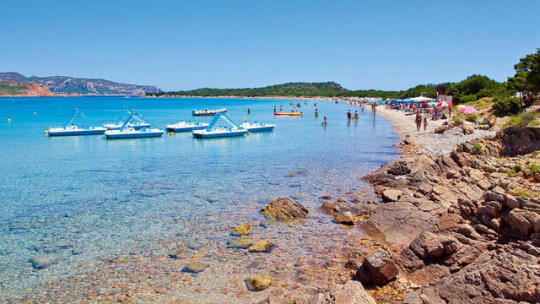
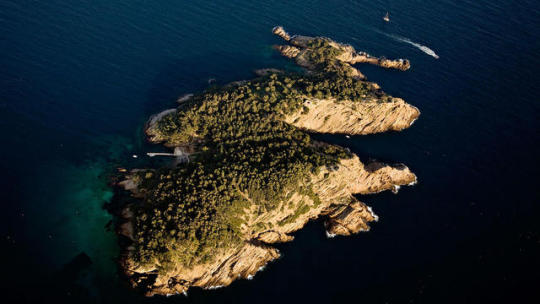


5 SECRET ISLANDS OF THE CÔTE D'AZUR
While mere mortals celebrity spot at Plage Pampelonne, the discreet elite drop anchor at these Côte d’Azur island gems. In truth, the French have been actively dissuading the hoi polloi from descending upon their lesser-known isles for centuries. Several were military forts, where retired captains could sip pastis in peace. Others were placed under national park protection, with the proviso that those wealthy enough could moor alongside at night. Only four of these island jewels can be reached by public ferry. The rest require a seaborne assault by yacht – or chopper. Cars are banned on all.
В то время как знаменитости на Plage Pampelonne, элита, бросает якорь на эти драгоценные камни острова Лазурный берег. По правде говоря, французы активно отговаривали от спуска на свои менее известные острова на протяжении веков. Несколько из них были военными фортами, где отставные капитаны могли спокойно выпить. Другие были помещены под охрану национального парка, при условии, что те, кто достаточно богат, могут причаливать ночью. Только четыре из этих драгоценных островов можно добраться на общественном пароме. Остальные требуют морского хода на яхте - или моторки. Автомобили запрещены для всех.
1. Cavallo Location: Off Sardinia, blessedly far from the Riviera rush
The Romans chose Cavallo as a penal colony. It’s remote, has minimal harbour facilities and is nigh impossible to find on a map: the perfect conditions for today’s A-list habitués. The secret spilled out in the 1970s when Catherine Deneuve and Petula Clark would beach up by speedboat. Roberto Cavalli is part owner of the tiny marina that opened on the private island’s southern tip a decade or so ago. He and his beloved dog Lupo regularly stroll the silken sands, greeting guests such as Paris Hilton and Alicia Keys. Island transport is by mountain bike, Mustique-style “mule” (otherwise known as a golf buggy) or on one of the horses kept by discreet island hotel Les Pêcheurs. The hotel can also provide passing yachts with anything from a sushi platter to a full-blown beach party catered by a private chef. Intrigued?
Римляне выбрали Кавалло как колонию. Он отдален, имеет минимальные возможности для гавани и почти невозможно найти на карте: идеальные условия. Тайна, освещенная в 1970-х годах, когда Кэтрин Денёв и Петула Кларк приехали на скоростном катере. Роберто Кавалли является владельцем крошечной пристани для яхт, которая открылась на южной части острова десять лет назад. Он и его любимая собака Lupo регулярно гуляют по шелковым пескам, приветствуя гостей, таких как Пэрис Хилтон и Алисия Кис. Островной транспорт - на горном велосипеде, Мужественный «мул» (иначе известный как багги для гольфа) или на одной из лошадей, содержащийся в островном отеле Les Pêcheurs. Отель также может предоставить проездные яхты с чем-нибудь от суши-блюд до полноценной пляжной вечеринки, обслуживаемой частным шеф-поваром. Заинтригованны?
2. Île Verte Location: Within swimming distance of La Ciotat
“Green Island” is the scene of the South of France’s best group swim: a yearly mass paddle, in May, from the nearby fishing village of La Ciotat. The scene on arrival is otherworldly. Lying midway between Bandol and Cassis, expect an uninhabited lost world of eucalyptus and holm oak. The windswept cove of Calanque Seynerolles feels more pristine Corsica than poseur Côte d’Azur. Owners of yachts with lots of anchor chain can party by night alongside their own private island.
Зеленый Остров находится на полпути между Бандолом и Кассисом, ожидайте увидеть необитаемый потерянный мир эвкалипта и дубового дуба. В ветреной бухте Каланк Сейнеролльс чувствуется более древняя Корсика, чем на лазурном берегу. Владельцы яхт с множеством якорных цепей могут провести вечеринку на частном острове.
3. Port-Cros Location: Sandwiched between the equally beautiful islands of Porquerolles and Levant
Forget the car. Not even bikes are allowed on Port-Cros. Here almost 22 miles of hiking trails lead through woods to translucent seas. As France’s first marine national park, the waters host 180 fish species including eagle rays. From Plage du Palud a five-buoy snorkel trail leads out to the teeny tiny island of Rascas Rock.
Забудьте машину. В Порт-Кросе не разрешены даже велосипеды. Здесь почти 22 мили пешеходных троп ведут через лес к полупрозрачным морям. Будучи первым морским национальным парком Франции, в его водах есть 180 видов рыб. Из Plage du Palud тропа с пятью буйками спускается к крошечному острову Rascas Rock.
4. Ratonneau & Pomègues Location: A faint shimmer
off the coast of Marseille
Since Roman times, sailors have been quarantined on Ratonneau. Lucky devils. This sun-seared granite speck has a Croatian quality: tiny beaches, jump-right-in rocks and more than 300 species of flora, including sea lilies that scent the spring breeze. The ruin of Hôpital Caroline now forms the backdrop for the yearly MIMI festival in early July, a 10-day blowout of musical avant-garde.
The Romans also built a simple causeway across to Pomègues, Ratonneau’s beautiful little brother. A secluded 700-berth marina now sits between the two islands. Best of all, the entire Frioul archipelago (which includes these islands as well as the Alcatraz-style Château d’If resides within the Calanque National Park, so those teeming shoals of brown grouper and John Dory are protected forever more.
С римских времен моряки были помещены в карантины на Ratonneau. Это окутанное солнцем гранитное место имеет хорватское качество: крошечные пляжи, скачущие в скалах и более 300 видов флоры, в том числе морские лилии, которые пахнут весенним бризом. Развалины Hôpital Caroline теперь составляют фон для ежегодного фестиваля MIMI в начале июля, 10-дневного выброса музыкального авангарда. Римляне также построили простую дорогу к Помегу, прекрасному маленькому брату Ратонно. Между двумя островами находится уединенная гавань на 700 мест. Лучше всего, весь архипелаг Фриуль (который включает в себя эти острова, а также замок в стиле Алькатрас, расположенный в Национальном парке Каланк, поэтому те изобилующие косяки коричневого окунь и Джон Дори защищены навсегда больше.
0 notes
Photo

Gull on a glide
Wings stiff, feet tucked in. Ratonneau island, Frioul Archipelago, CAz.
0 notes
Photo
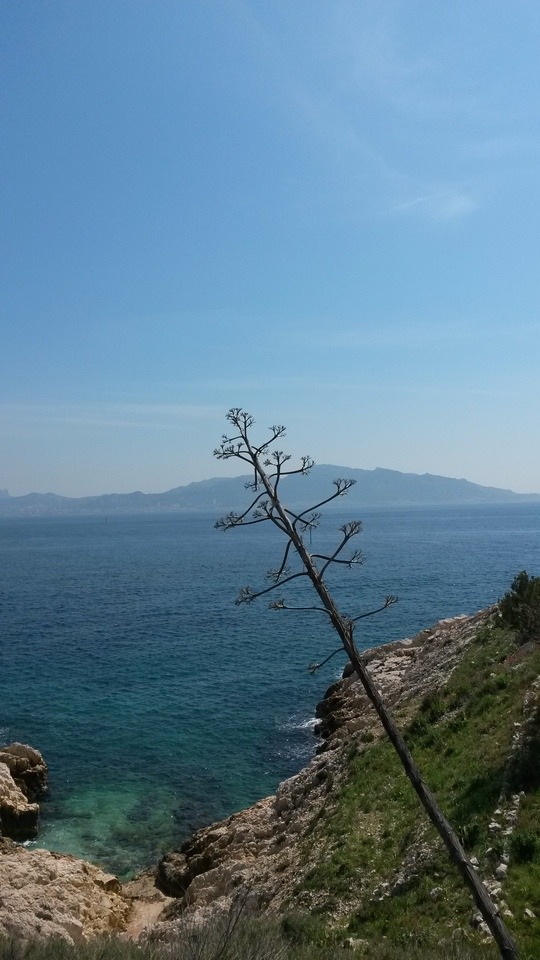

T.T.d.F. - Floraisons desséchées d’aloès, Îles du Frioul (île Ratonneau) 12 avril 2017
0 notes
Text
Marsella
La primera vista de la ciutat és des de la balconada blanca de l’estació de tren. Mentre espero, començo un dibuix que quedarà inacabat. Baixant l’enorme i elegant escalinata, cau la tarda. Una cortina gris i opaca de llum daurada.
Filla del mestral, Marsella és un tros de mar damunt la terra. Tots els camins porten al port, tres arestes d’un rectangle llarg i estret vigilat per dues fortaleses calcàries.
Baixem pel Boulevard d’Athènes fins a la Canebière i d’allà fins a casa. La taquilla de l’Òpera és un tros de passat. La veïna es pensa que som txecs.
Davant l’immens Hôtel Dieu hi ha la casa més vella de Marsella. Girada noranta graus sobre el seu eix respecte la ubicació original. Els marsellesos saben girar cases sense moure ni un maó.
Voltem pel Panier, el barri més antic de França. 100 generacions de marsellesos ens contemplen. Per sopar volem demanar calamars a la graella però no ens en sortim. Calamars sense nom. Optem per gnocchi boulettes, però la pasta no ve amb bolets sinó amb carn picada amb all, julivert i pinyons. No tenim esma ni de fer postres.
A la pastisseria provençal de sota casa comprem croissants de mantega per esmorzar. La dependenta no vol tocar monedes ni bitllets i hem de dipositar els diners en una caixa fosca.
Al Quai des Belges hi ha mercat de peix i de flors. Morenes, lluços i margarides. També hi ha cavallets de mar. Un dels venedors, bosses profundes sota els ulls com dues fosses marines, respira entubat a una bombona d’oxigen. Un pescador amb brànquies.
A la cantonada del port hi ha una sínia gegant de color blanc que gira en silenci. No hi puja ningú.
Seiem a una de les terrasses de la Place de Lenche. No ens atén ningú i entrem a demanar. Rere el taulell una dona de negre impol·lut i coll blanc bat ous i farina frenèticament. Ens serveixen un te sense aigua i un cafè amb llet sense llet.
La catedral de La Major, tocant a la terminal de ferris, està tota recoberta de línies horitzontals verdes i blanques. Com a Siena, però sense gust. La catedral pijama.
A l’extrem nord del port hi ha el Museu del Mediterrani. Un polígon de vidre amb una carcassa negra amb mil obertures. Un formiguer ple de forats. Comprem postals a la botiga. El mar és una bassa d’oli. Un tel de llum verda. Es veu el fons farcit de roques punxegudes. L’aigua és tan transparent com nosaltres.
Pugem per una llarga passarel·la fins al Fort Saint-Jean, un del dos baluards de la ciutat. Un pescador local es va fer cèlebre perquè en un judici li van preguntar, vostè és francès? No, jo sóc de Saint-Jean.
Baixem de la fortalesa en ziga-zaga i desfem el camí fins al moll. Les portes de la duana estan tapiades. A una de les parets han grafitat un unicorn rosa.
Els marsellesos passegen. Quatre jubilats vestits de blau i amb ulleres de sol mengen entrepans asseguts en un banc.
Les barques han abandonat xarxes de pescar en piles entortolligades. Cabells de gegant. Més tard els veurem, però encara no ho sabem.
Mentre fem temps passegem pel barri dels Caputxins i entrem en una ferreteria amb escombres per tot arreu. L’oferta cosmètica també és extensa. Tenen sabons de llet de burra.
Pugem a la barca que ens ha de dur a l’illa d’If. Les golondrinas. L’home del nostre davant fa morros i porta una gorra vermella amb un dels nans de la Blancaneus serigrafiats.
El Castell d’If és un cub llis de pedra amb tres torres cilíndriques enmig d’un illot de 200 metres de llarg. Com un castell de sorra fet amb galledes gegants. Visitem la cel·la on Edmond Dantès va viure 14 anys abans de convertir-se en el Comte de Montecristo. La catalana Mercedes l’estimava, però no va confiar ni esperar.
A la sala circular dels merlets, en la penombra, cristalls d’aigua marina es reflecteixen a les parets de pedra dibuixant una tela en infinita oscil·lació.
Passegem pel camí de ronda i ens asseiem en mànigues de camisa a un dels extrems. Un guarda que carrega una bombona de butà ens xiula i ens renya. Tres adolescents russos juguen a fer veure que es llencen al mar mútuament. Els turistes esgotats s’estiren en hamaques de fusta. El solàrium dels avorrits impacients.
Una màquina de patates fregides i croissants industrials és l’únic rastre de modernitat. Per les finestres del lavabo entra una llum pàl·lida i lletosa. Un lavabo tuberculós.
Agafem la següent barca i desembarquen a les dues illes de l’arxipèlag de Frioul. Pommègues i Ratonneau. Ens quedem a la segona. És una massa rocosa que s’estén dos quilòmetres d’est a oest. Tots els locals del port esportiu estan tancats menys dos. En una taula tenen baguettes però no ens volen fer cap entrepà. L’alternativa és un carpaccio de tonyina, però ho descartem.
Creuem un turó rere l’altre salvant tarteres. Hi ha un fort abandonat i un antic hospital militar reconvertit en centre de formació per a paletes. Al mig hi ha un temple grec fals. En un mur hi ha una pintada viva. La vie est un cadeau, le bonheur est un combat. La vida és un regal, la felicitat és un combat.
L’illa de Ratonneau és el regne de les gavines, que fan de sentinelles amb els ulls injectats de sang i amb una taca vermella sota el bec. No saben pintar-se els llavis. Ens esguarden fixament i grallen. Una assemblea de gavines tramant un complot tranquil.
Girem cua i resseguim la carena fins a l’altra punta. El paisatge adquireix un to fantasmagòric sota la llum crepuscular. Veiem diverses estructures en runes. Semblen magatzems nuclears i centres astronautes abandonats. Estem a punt de trepitjar un cementiri de processionàries. Passem pistes de tennis de grava de color carbó i un camp de futbol pintat sobre el terra d’una habitació sense sostre.
Les cales de pedra negra i aigua entintada són germanes del nord de Menorca. Hem caminat damunt la lluna. Roques enormes delimiten la platja. Gegants adormits amb la pell polida amb paper de vidre.
Observem en silenci el sol que se’n va deixant un rec porpra sobre el cel i tornem al port mentre arriba la nit. A l’horitzó, un transatlàntic passa entre els cingles de l’illa veïna. El creuer de Godard.
Famèlics, entrem al bar minúscul d’un descampat. Dos homes. Un corsari retirat amb el nas picat de verola i un canari d’ulls blaus impossibles. Juguen a daus i parlen de petanca. Ens conviden a panets de pasta de croissant regats en salses diverses. Pesto vermell, paté de sardines i all, maionesa i mostassa vella de Dijon. Mapes d’Oceania a les parets i Trump a la televisió. Parlem de Còrsega. El corsari sentencia. Un tros de muntanya dins el mar.
Al vaixell de tornada a Marsella dones solitàries viatgen amb gossos i grups de mariners beuen whisky a morro per torns.
Sopem cuscús amb carn i pollastre amb olives i pastanaga en un restaurant marroquí. Bevem te de menta. Mengem en plats de terrissa amb sanefes geomètriques. Vull una vaixella igual.
Païm passejant pels voltants de la plaça Jean Jaurès. Fileres de testos amb plantes delimiten la calçada. No hi ha ni una paret lliure de pintades, eslògans i dibuixos. Locals polonesos, iranians i senegalesos. Fem una copa i dues en un bar preciós amb el sostre amb bigues de fusta. El cambrer resol un cub de rubik i dos clients juguen a la Nintendo 64 asseguts al sofà. Viatge als noranta.
Fem l’última al bar Au Petit Nice. Sense moure’ns de lloc, canviem la taula folrada amb publicitat d’apostes de futbol per una de marbre llis. No complia els mínims estètics.
Anem a dormir tan tard que gairebé ja és d’hora.
Quan sortim al carrer ja és migdia. Fa olor d’Amsterdam. Caminem amb les maletes buscant el forn més antic de la ciutat. Una dona ens escridassa a mitja pujada. Només fan navettes, la pasta tradicional de Marsella. No ho tenim clar i comprem pizza a un local africà del mercat de fruita.
Ens refugiem al Panier. Tots els restaurants estan tancats. Avui tampoc no dinarem. Davant la catedral, cinc noies escoltes canten cançons de penitència. El propietari d’un bar que tanca ens recomana un forn. Hi comprem quiche de pernil i de porros. La mestressa diu que és de ceba però que no li fem cas que s’acaba de llevar de la migdiada. És una fornera dormilega que parla italià però no l’entén.
Al Panier passen cosses estranyes. Graffitis inquietants i libèl·lules de papiroflèxia. Moltes parets tenen cartells anarquistes i caricatures del general De Gaulle. Al cafè de la Vieille Charité, hi ha el moble més dolç de la ciutat. Una taula de cotó de sucre rosa.
Lisboa i Roma. Les nostres vides convergeixen al vell barri del Panier. Places lisboetes i façanes romanes. Miradors esparracats i porticons verds en parets cremoses. La planta baixa d’una casa està empaperada de partitures. L’epifania es recargola a la Place des Moulins, amb les portes i les finestres pintades de blau grec.
Tot baixant, passem davant una pizzeria amb una madame trans sortida directament del barri xino de Barcelona. Les portes de les cases tenen una barra de ferro a l’alçada dels peus per treure’s el fang de les sabates.
Abandonem el desert del Panier i remuntem fins a l’estació. A mig camí topem amb un mercat d’andròmines. Hi ha més compradors que gènere. Els hipotètics compradors, africans enfundats en jaquetes de pell, es mouen en grups com entre les restes d’un naufragi.
Avancem un home que vesteix amb orgull el xandall de l’equip de la ciutat. Veus aquesta franja turquesa? És el color de la samarreta de l’OM. No hem tingut temps d’anar al Vélodrome ni a la Ciutat Radiant de Le Corbusier. El verd blau veterinari és el color cuqui per excel·lència amb el salmó.
L’últim glop de Marsella és un te verd en una cafeteria modernista d’una decadència exemplar. L’única cambrera, en consonància amb el local, fa esforços titànics per atendre’ns i servir-nos. Recordem A Brasileira, el cafè de Pessoa amb mil miralls i ens cobreix un desassossec tan coherent com inevitable. A l’hora de pagar, la cambrera fa veure que no sap comptar i haig d’ajudar-la a triar el canvi.
Marsella és a punt de ser un record.
Ciutat de sal i de quitrà. Pizza d’anxoves. Adolescents amb tupè i pijames militars. Dibuixos inacabats, dinars inexistents, cases buides. Un paradís borratxo de dolor.
Sortim d’un món que ens és familiar i estranger alhora. Mosaic imperfecte i complet de la mediterrània, on el temps ha conquerit els carrers i les places i les persones. Res ja no és, tot és passat i memòria.
Des de l’andana ja no es veu el mar i la ciutat és dins la càmera analògica.
0 notes
Photo

Frioul
Marseilles
Fuji Reala 100 ISO
0 notes